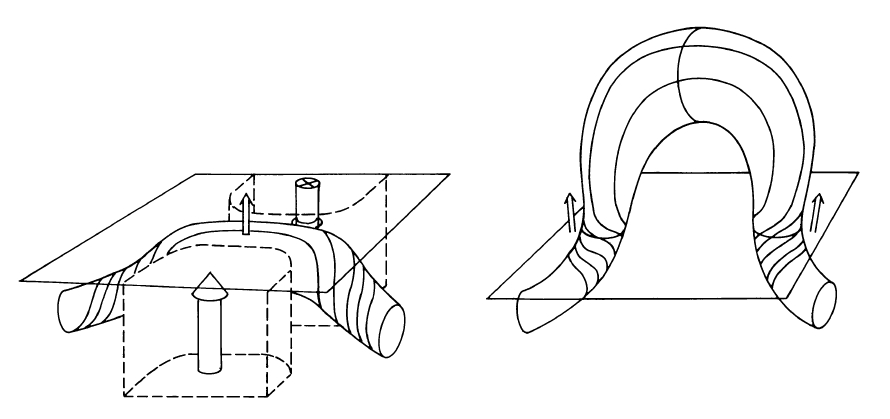
Uchida, Yutaka and Kazunari Shibata, A Magnetodynamic Mechanism for the Heating of Emerging Magnetic Flux Tubes and Loop Flares, Sol. Phys., 116, 291-307 (1988) (ADS)

(click on the image for a larger version)
Date: 2006 December 29
Update: 2019 November 21
This cartoon offered a neat way to get magnetic energy release in the corona without magnetic reconnection. A pair of twist waves (large and powerful Alfvén waves in the Alfven mode) erupt from the photosphere and collide at the top of the flux tube they are confined to. This collision results in a cancellation of the twist and (voila! - or maybe, sasuga!) energy release. The microphysics would have to be figured out by somebody else. While it seemed to the Archivist that this model had a fatal weakness, it still served to make the important pedagogical point that reconnection is not the only theoretical option for magnetic energy release in the corona. One weakness might be the time scale involved in the upward propagation of the twist wave packet. Another niggling consideration is the need for two simultaneous wave packets, something that can't generally be expected to happen. The paper explains this in terms of the stress imposed at the actual surface just prior to eruption; that sounds quite wrong, though. One finaly niggle, also found in a Sturrock cartoon, is the apparently non-physical jump of current implied by the change of geometrical twist at the photospheric layer.
By contrast, the Fletcher-Hudson cartoon has the significant waves originating in the corona and going the opposite way. There's a stark contrast, in fact: one model predicts looptop heating, and one predicts footpoint heating.